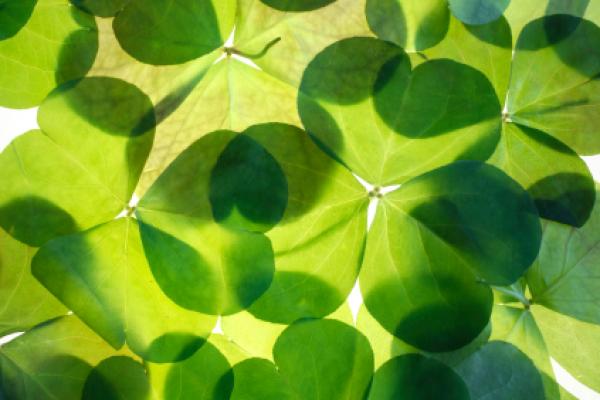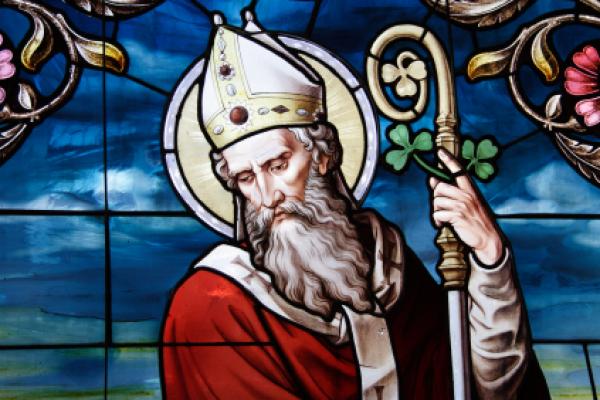St
Patricks Day in United Kingdom
St
Patrick's Day occurs on March 17. It is a national holiday in Ireland
and commemorates one of its patron saints, St Patrick. In the United
Kingdom, it is celebrated in Irish pubs and in cities, such as
Nottingham and London where many people with an Irish background
live.

The
color green and images of the clover are often seen on St Patrick's
Day.
What do people do?
March
17 is a bank holiday in Northern Ireland. The degree to which people
celebrate St Patrick's Day varies according to their religious and
political affiliations. Those, who believe that Northern Ireland
should remain part of the United Kingdom, do not generally celebrate
the day. Those, who believe that Northern Ireland should become part
of a United Ireland often celebrate St Patrick's Day. A large parade
is held in Belfast but the level of public funding it receives
depends on which political parties control the local council.
March
17 is just a normal day for many people in England, Scotland and
Wales. They go to school or work as normal, and do not hold or attend
any special events. Some may go for a drink in their local Irish pub
at lunch time, after work or in the evening. However, in some towns
and cities, particularly those with large Irish populations, parades
and other large scale events are organized.
A
weekend of celebrations is organized in Nottingham. These include a
parade, children's workshops, an arts festival and performances by
well-known Irish musicians. There is also a parade, attended by many
thousands of people in Birmingham. An Irish festival lasting three
days is held in Liverpool.
A
whole week of celebrations is organized around St Patrick's Day in
London. These include a parade and a festival held close to, but not
always on, March 17. The parade visits Trafalgar Square and Covent
Garden and the festival are held in Trafalgar Square, Leicester
Square and Covent Garden. Together, the parade and festival allow
people to experience many aspects of Irish culture including food,
crafts, dance and music.
Public life
St
Patrick's Day is not a public holiday in England, Wales or Scotland.
In these three parts of the United Kingdom, schools, stores,
businesses and other organizations are open as usual. Public
transport systems run to their normal timetables. Local events, such
as parades, can cause some local disruption to traffic. If you think
this may affect you, it is a good idea to check the local press for
details.
St
Patrick's Day is a bank holiday in Northern Ireland. Schools and many
organizations are closed. Stores and other businesses may be open or
closed. Public transport systems may run on holiday timetables. There
may be some local disruption to traffic due to parades or other
events. The bank holiday falls on the following Monday if March 17
falls on a Saturday or Sunday.
Background:
St
Patrick is one of Ireland's patron saints. He is believed to have
died on March 17 in or around the year 493. He grew up in mainland
Britain, but spent time in Ireland as a young man and later as a
missionary. According to popular legend, he is buried under Down
Cathedral in Downpatrick, County Down, and banished all snakes from
Ireland. However, it is thought that there have been no snakes in
Ireland since the last ice age. The “snakes” that St Patrick
banished from Ireland, may refer to pagan worshipers of snake gods.
The
date of St Patrick's Day is fixed as March 17. It is occasionally be
moved by the authorities of the Catholic Church. This happened in
1940, so that the celebrations would not fall on Palm Sunday, and in
2008 to avoid Holy Monday, the last Monday before Easter Sunday.
These changes do not often affect non-church celebrations. In
particular, the bank holiday in Northern Ireland is still held on
March 17 or the Monday afterwards if March 17 falls on a Saturday or
Sunday.
St
Patrick's Day was originally a religious occasion to mark the life
and work of St Patrick. In 1903 it became a public holiday in the
whole of Ireland. Pubs were not allowed to open on March 17 until the
1970s. It is only recently that St Patrick's Day has become a secular
holiday.
St. Patrick's Day:in other countries:
St
Patrick’sDay is a global celebration of Irish culture on or around
March 17. It particularly remembers St Patrick, one of Ireland’s
patron saints, who ministered Christianity in Ireland during the
fifth century.

St Patrick’s Day is celebrated in many parts of the world, especially
by Irish communities and organizations. Many people wear an item of
green clothing on the day. Parties featuring Irish food and drinks
that are dyed in green food color are part of this celebration. It is
a time when children can indulge in sweets and adults can enjoy a
“pint” of beer at a local pub. Many restaurants and pubs offer
Irish food or drink, which include:
- Irish brown bread.
- Corned beef and cabbage.
- Beef and Guinness pie.
- Irish cream chocolate mousse cake.
- Irish coffee.
- Irish potato champ, also known as poundies, cally or pandy.
- Irish stew.
- Irish potato soup.
Some people plan a pilgrimage to St Patrick’s Purgatory, which is commonly associated with penance and spiritual healing since the early 13th century. It is on Station Island in Lough Derg in County Donegal where St Patrick had a vision promising that all who came to the sanctuary in penitence and faith would receive a pardon for their sins.- Public lifeSt Patrick's Day is a bank holiday in Northern Ireland (United Kingdom) and the Republic of Ireland. St Patrick’s Day is also a festive occasion in some parts of the world where it is not a public holiday. Therefore traffic and parking may be temporarily affected in streets and public areas where parades are held in towns and cities.
Background
St Patrick is one of the patron saints of Ireland. He is said to have died on March 17 in or around the year 493. He grew up in Roman Britain, but was captured by Irish raiders and taken to Ireland as a slave when he was a young adult. After some years he returned to his family and entered the church, like his father and grandfather before him. He later returned to Ireland as a missionary and worked in the north and west of the country.According to popular legend, St Patrick rid Ireland of snakes. However, it is thought that there have been no snakes in Ireland since the last ice age. The "snakes" that St Patrick banished from Ireland, may refer to the druids or pagan worshipers of snake or serpent gods. He is said to be buried under Down Cathedral in Downpatrick, Ireland. Ireland’s other patron saints are St Brigid and St Columba.Luke Wadding, a Franciscan scholar born in 1588 in Waterford, on the south coast of Ireland, was influential in ensuring that the anniversary of St Patrick's death became a feast day in the Catholic Church. Many Catholic churches traditionally move St Patrick's Day to another date if March 17 falls during Holy Week.Many immigrants from Ireland fled to other parts of the world, including Australia, Canada, the United Kingdom and the United States, in the 19th and 20th centuries. Many Irish customs, including the St Patrick’s Day celebrations, became quite popular in these countries. However, much of the interest in the St Patrick’s Day events is largely commercially driven in the 21st century.Symbols
- The most common St Patrick's Day symbol is the shamrock. The shamrock is the leaf of the clover plant and a symbol of the Holy Trinity. Many people choose to wear the color green and the flag of the Republic of Ireland is often seen in St Patrick’s Day parades around the world. Irish brands of drinks are popular at St Patrick’s Day events.Religious symbols include snakes and serpents, as well as the Celtic cross. Some say that Saint Patrick added the sun, a powerful Irish symbol, onto the Christian cross to create what is now called a Celtic cross. Other Irish-related symbols seen on St Patrick’s Day include the harp, which was used in Ireland for centuries, as well as a mythological creature known as the leprechaun and a pot of gold that the leprechaun keeps hidden.
No hay comentarios:
Publicar un comentario